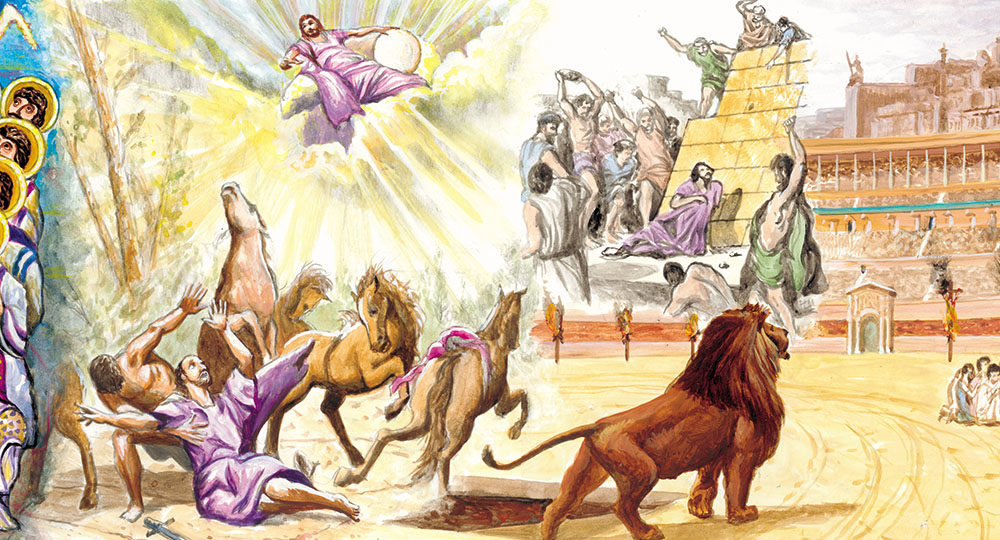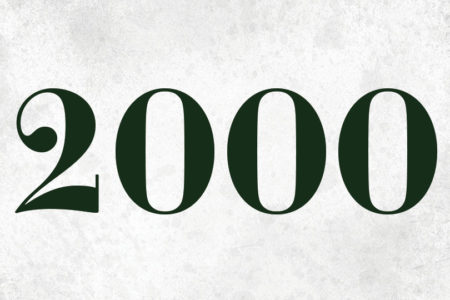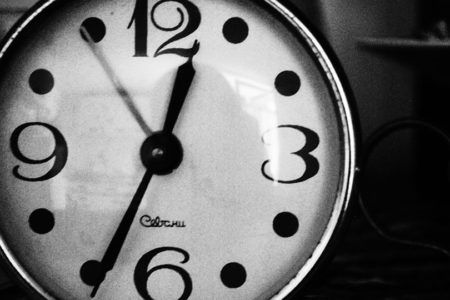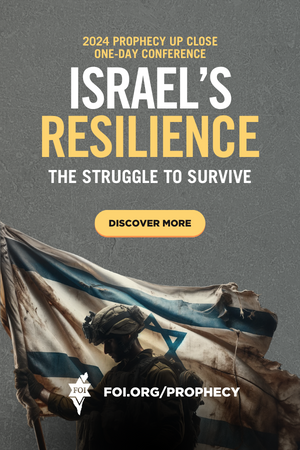Two Millennia of Church History
Over 2,000 years have transpired since Jesus Christ, the Son of God, was born in the land of Israel. While He was here, He said, “I will build my church” (Mt. 16:18). Through His death on the cross for the sins of the world, burial in a tomb, and bodily resurrection three days after his death, Jesus enabled the church to be born and to be built (Eph. 2:13–22). The church began on the Day of Pentecost, 10 days after the Lord Jesus ascended to God the Father in heaven (Acts 1–2).
For almost 2,000 years since its birth, the church has been in the process of being built. Church history is the record of that construction. It is an important record because it reveals what happens when the church is led in the right direction and what results when it is led astray.
Tragically, the church is often led in wrong directions because the majority of Christians don’t know its history. For the sake of the church, it is imperative that such lack of knowledge be corrected. To that end, an overview of the two millennia of the church’s history has been prepared. It is presented with the hope that it will help to make a difference for the benefit of the church and the glory of Jesus Christ, its Head (Eph. 1:20–23).
—Renald E. Showers
ANCIENT CHURCH HISTORY
The Apostolic Church (Early 30s—100 A.D.)
Early Beginnings. The church begins on Pentecost in the early 30s A.D. (Acts 2). Membership is entirely Jewish for several years, and the church is led by Jewish apostles. Deacons are appointed to serve the church.
Early Persecution. Jewish unbelievers persecute Jewish believers, led by Saul of Tarsus, a Pharisee. The Sanhedrin kills Stephen, a Jewish deacon.
Early Expansion. Samaritans and the Ethiopian eunuch believe in Christ and enter the church through the preaching of Philip, a Jewish deacon. Saul of Tarsus comes to faith in Christ as a result of the resurrected, glorified Christ appearing to him. Saul becomes Paul, a Jewish apostle. Gentiles believe in Christ and enter the church through the preaching of Peter, a Jewish apostle.
More Persecution. Herod Agrippa I persecutes the apostles; the apostle James is killed.
The Antioch Church. Jewish believers bring the gospel to Gentiles in Antioch of Syria. The first predominantly Gentile church is established here. In Antioch believers are first called Christians. The Antioch church sends Paul and Barnabas as Jewish missionaries on their first missionary journey to Cyprus, Pamphylia, Pisidia, and Lycaonia. Many Gentiles become believers. Paul and Barnabas are appointed elders to lead each new church.
The First Church Council. The first church council meets in Jerusalem. Decision: Gentiles can be saved and enter the church as Gentiles; they do not have to become Jews.
Later Expansion. Paul and Barnabas go on separate missionary journeys. On his second journey, Paul plants churches in seven key cities and carries the gospel to Europe. On his third, Paul builds an excellent church in Ephesus and plants the gospel in all of Asia Minor. Then he is held prisoner for about five years. After his release he takes a fourth journey, possibly to Spain, then is imprisoned again.
The Beginning of Roman Persecution. Emperor Nero begins the Roman persecution of the church in 64 A.D. Later he murders the apostles Peter and Paul.
The Destruction of Jerusalem. Jewish Christians do not participate in the Jewish War against Rome. They cross the Jordan River and settle in Pella, escaping the horrors of the Roman siege and destruction of Jerusalem and the Second (Herod’s) Temple in 70 A.D.
More Roman Persecution. Emperor Domitian persecutes the church extensively (81—96 A.D.). The apostle John is exiled to the Island of Patmos, where he receives and writes the Revelation of Jesus Christ.
The Writing of the New Testament. The New Testament is written from the mid-40s to the mid-90s A.D. Revelation is written last.
The Church at the End of the Apostolic Age. The Apostolic Age ends when the last apostle, John, dies around 100 A.D. By now the church is strong, aggressive, and growing. Local churches exist in every major city from Italy in the west (including, perhaps, Spain and Britain) to the Tigris-Euphrates Rivers in the east, from the Black Sea in the north to North Africa in the south. Believers come from every class but mostly from poor and slave classes. Yet all are equal in the church and hold positions of leadership. Baptism and communion are conducted for believers only. Sunday gradually replaces the Sabbath as the day of worship. Some churches observe one Sunday a year as the anniversary of Christ’s resurrection. Moral standards are high, but spiritual life is lower than desired.
The Persecuted Church (100—313 A.D.)
Spontaneous Roman Persecution. From 100 to approximately 250 A.D. Roman persecution erupts in certain localities. Many Christians become martyrs.
Planned Roman Persecution. From approximately 250 to 311 A.D. government persecution is planned and vigorous. Officials throughout the empire are ordered to arrest Christians and give them an ultimatum: Deny your faith in Jesus Christ, or die. It becomes official policy to destroy Christianity. Vast numbers of Christians refuse to deny Jesus and become martyrs, often as public entertainment in large arenas. Yet the church grows stronger and expands throughout the empire.
Heresies and Divisive Issues. During the persecution, the church faces the heresies of legalism, Gnosticism, Manicheanism, Neo-Platonism, Montanism, and Monarchianism. It also contends with two major, divisive issues: When should Easter be celebrated, and what should be done with professing Christians who deny their faith to escape persecution?
Official End of Roman Persecution. In 311 A.D. Emperor Galerius issues the Edict of Toleration, commanding that Christians be tolerated. This officially ends the Roman persecution. In 313 A.D. Emperor Constantine issues the Edict of Milan, granting Christians total freedom. Now they may meet freely for worship and openly propagate their faith.
Development of Views and Practices. During the persecution, the title Catholic (meaning “universal”) is applied to the organized church throughout the Roman Empire. Some leaders begin advocating the concepts of apostolic succession (the idea that the apostles’ authority is passed to key church leaders) and the primacy of Peter (the idea that Peter was the foremost apostle). Some leaders in the eastern segment of the church develop the allegorical (as opposed to literal) method of interpreting the Bible. This method and the influence of Greek philosophy cause some leaders to reject and attack chiliasm (the view known today as Premillennialism)—the original eschatological position of the church. Some leaders begin writing and preaching anti-Semitic concepts. A cycle of feast days develop: Easter is observed universally by 300 A.D., some observe Christ’s birthday on December 6, and some begin the practice of Lent. The fish becomes a symbol of Christianity. Some begin baptizing infants. Construction of church buildings begins in the early 300s. Some begin to regard communion as a sacrifice. Some begin praying to dead saints.
Development of Organization. Around 125 A.D. local assemblies begin elevating one elder in authority over others. He is called the monarchal (ruling) bishop of the local church. These bishops are equal in authority with each other. By the 200s, local churches throughout the Roman Empire are grouped into divisions paralleling the diocesan political divisions of the empire. The bishop of the largest local assembly in the largest city of each church diocese receives the title of metropolitan bishop and has authority over the other bishops in his diocese. By 313 A.D. the church is well organized and large (perhaps some sixty million members).
The State Church (313—590 A.D.)
Union of Church and State. 324 A.D.—Emperor Constantine decrees Christianity the state religion of the Roman Empire and declares himself to be a Christian. 380 A.D.—Emperor Theodosius I makes Christianity the sole religion allowed within the empire. Pagan religions are outlawed, and there is complete union of church and state.
Missionary Activity. Early 300s A.D.—Celts of Britain become true believers in Jesus before the Angles and Saxons invade. 432—461 A.D.—Ireland converts to Celtic Christianity through the missionary work of Patrick, a British, Celtic Christian. By 496 A.D. the king of the Franks and his people adopt Christianity. Columba, an Irish Christian, leads in the evangelization of Scotland.
Church Councils and Theological Disputes. From 313 to 590 A.D. the church faces theological disputes concerning the person of Jesus Christ, the person of the Holy Spirit, the nature of man, and how man is saved. Several church councils convene to examine and settle these issues.
Development of Organized Monasticism. Some individuals pursue a monastic lifestyle through isolation. Eventually monasteries are built, where monks worship and live together apart from society. The first monastery is built on an island in the Nile River in 340 A.D. In the early 500s the first monastic order, the Benedictine Order, is established under Benedict’s Rule of poverty, chastity, and obedience.
Emergence of Roman Catholicism. Between 313 and 590 A.D. the organized church changes from the Catholic church (with each bishop equal) to the Roman Catholic Church (with the Roman bishop as first among equals). Bishops of the church in Rome claim their church was founded by the apostles Peter and Paul, that Peter was its first bishop, that Christ appointed Peter to be His vicar on earth, and that the bishops of Rome inherit this vicarship of Christ by apostolic succession from Peter. By 590 A.D. these claims are accepted in the western half of the organized church. In 445 A.D. the Roman emperor officially recognizes the primacy of the Roman bishops. Leo I (440—461 A.D.) is the first Roman bishop to assume the title of papas (“pope”). He claims judicial authority for the Roman church over the entire church. When the western half of the Roman Empire falls in 476 A.D., the Roman church provides leadership and stability for Western Europe.
Development of Views and Practices. The following concepts develop between 313 and 590 A.D: purgatory and baptismal regeneration; veneration of angels, saints, relics, statues, and pictures; the system of seven sacraments; the observance of Christ’s birth on December 25; more holy days; Sunday as an official day of rest and worship; antiphonal singing; acceptance of infant baptism; communion as a sacrifice; pilgrimages for penitential and thanksgiving purposes; the building of magnificent church buildings. Veneration of Mary begins. She is called “the mother of God” and “the queen of heaven”; eternal virginity and sinlessness are ascribed to her; prayers are offered to her; she is made the head of all saints and is said to have ascended bodily into heaven. Augustine popularizes the amillennial view of eschatology, which strips Israel of future blessing.
Condition of the Church. The union of church and state makes the organized church rich. It begins adopting the world’s standards and becomes polluted with pagans, who find it politically and socially expedient to associate with local churches. They introduce pagan beliefs and practices into the organized church.
MEDIEVAL CHURCH HISTORY
The Latin-Teutonic Church (590—800 A.D.)
Papal Authority and Influence. Gregory I, bishop of Rome (590—604 A.D.), becomes the first real pope in the sense of authority and influence. He gains control over the churches of Gaul, Spain, Belgium, Britain, Africa, and Italy by sending Roman missionaries there and handpicking the bishops. He befriends the emperor of the eastern half of the Roman Empire, who calls him “head of all the churches.” He makes the Roman church the wealthiest and the virtual political ruler over the province around Rome. He helps develop the concepts of purgatory, transubstantiation, and the worship of saints; claims that church tradition equals the authority of the Bible; and strongly supports monasticism.
Missionary Activity. Pope Gregory sends Roman missionaries to southern England to convert the Anglo-Saxons to the Roman brand of Christianity. The Celtic Christians oppose this intrusion so strongly that the Anglo-Saxon king convenes a meeting in 664 A.D. to decide which brand of Christianity will be the sole one allowed in England. He chooses Rome because it claims to have the keys to heaven. Other areas convert to Roman Catholicism: the Visigoths in Spain in 589 A.D., Belgium and Holland, the Lombards of southern Italy by 675 A.D., and most of Germany by 718 A.D.
The Impact of Islam. The organized church loses Palestine, Asia Minor, Egypt, and North Africa to Islam. Since Muslims regard all images and pictures as idolatry, the eastern segment of the church changes to reach Muslims for Christianity. After considerable controversy, in 787 A.D. the eastern church decides as follows: Pictures are allowed in worship; most images are abolished; only what the pictures and images represent are to be worshiped. The Roman bishop becomes more powerful because some of his rivals in the East come under Muslim domination or lose much of their domains.
The Donation of Constantine. In the 700s A.D. an official-looking document (The Donation of Constantine) appears in Western Europe. It claims that in the 300s, Emperor Constantine gave the bishop of Rome supreme authority over all Europe, even above the emperors. It declares the Roman church supreme over all others and the Roman bishop the supreme bishop, gives the Roman bishop the emperor’s palace in Rome plus the clothing and insignia of the emperor, and moves the capital to Constantinople so as not to interfere with the imperial rights of the Roman bishop in Europe. The Roman church gains great power through this document until it is discovered to be a fraud in the 1400s.
Revival of Western Imperialism. During the late 700s Charlemagne, king of the Franks, amasses the most territory ruled by one man in Western Europe since the fall of the western half of the Roman Empire. On Christmas Day, 800 A.D., the pope crowns Charlemagne “emperor of the Romans.” This act revives imperialism in the West, gives birth to the idea that political rulers must receive their crowns from the pope, obligates political rulers to aid the pope when in trouble, and instigates the following new philosophy in Europe: The Kingdom of God has two arms—the spiritual, with the pope over human souls, and the political, with the emperor over human physical life. Thus the pope and emperor are to give each other mutual support. This philosophy sets the stage for conflict between popes and emperors for the rest of the Middle Ages.
The Corrupt, Divided Church (800—1054 A.D.)
Papal Corruption. From 867 to 1049 the papacy degenerates to its lowest point. More than 40 persons occupy the papal throne. As various noblemen seize church positions for their sons or relatives, organized Christendom becomes infested with corrupt, immoral bishops and popes who know almost no theology. Several popes are assassinated by their successors. Some have mistresses. One fathers an illegitimate son. Another worships pagan gods and turns the papal palace into a house of prostitution. Another sells the papacy for money. At one time three different men claim to be pope. Pope Leo IX finally ends this corruption in 1049 A.D.
The Holy Roman Empire. Charlemagne dies, and his empire is divided into thirds. Germany becomes dominant. German ruler Otto I rescues Pope John XII from trouble in Italy, and Pope John crowns Otto “emperor of the Holy Roman Empire” in 962 A.D. Central Europe comes under German control.
The Isidorian Decretals. In the mid-800s documents called the Isidorian Decretals appear in Europe. They claim to be decrees from Roman bishops since apostolic times. Some are genuine; others are frauds. They claim absolute supremacy of the pope over all church leaders, total freedom of the Roman church from state control, and exempt the clergy from trial in secular courts. Many popes use these decretals to support their claim to power.
Missionary Activity. Denmark, Norway, Sweden, and Iceland become Roman Catholic around 1000 A.D., mainly through the effort of one missionary, Ansgar. Russia, Central Europe, and Eastern Europe convert to Greek or Eastern Orthodox Christianity.
Papal Election. In 1059 A.D. the Roman people lose their right to elect popes. It goes to church leaders called cardinals, who hold an electoral meeting called the College of Cardinals.
Monastic Reform. By the 900s the Benedictine monasteries are rich and corrupt. A movement to reform them begins in Cluny, France, in 910 A.D. It condemns simony (the buying and selling of church offices) and nepotism (the appointing of relatives to church offices), urges the enforcement of celibacy for clergy, demands the state relinquish all control over the church, and demands that all monks be subject to papal authority. By 950 A.D. this movement becomes a new monastic order, the Cluniac Order.
The Split of 1054 A.D. In 1054 A.D. organized Christendom splits into east and west. Thus begins the formal organization known as the Greek or Eastern Orthodox Church. The western church remains the Roman Catholic Church. Several issues lead to this split: Did the Holy Spirit proceed from the Father and Son or only from the Father? Should clergy be forbidden or required to marry? What type of bread should be used in communion? Should clergy be required to wear beards? When should Easter be observed? Should a weekly fast day be required? Should images and pictures be allowed in worship? Should the patriarch (bishop) of Constantinople be forced to recognize the pope as supreme ruler of the church? In 1054 the pope and patriarch excommunicate each other from the church.
Transubstantiation. In the 830s a French monk, Radbertus, strives to popularize transubstantiation (the concept that the communion bread and wine miraculously change to the flesh and blood of Christ).
The Dominating Church (1054—1305 A.D.)
During this period the Roman Catholic Church dominates all phases of Western European life.
Significant Popes. Pope Gregory VII (1073—1085) reforms the clergy, frees the organized church from state control, makes the organized church supreme over the state, claims the pope is God’s vice-regent on earth with authority to depose political rulers and release subjects from allegiance to them, and claims the Roman Catholic Church is always free from error. Pope Innocent III (1198—1216) claims that God has committed the whole world to the pope, and the pope can depose political rulers and subject their nations to the interdict (removal of all church ministries to the people until their ruler submits to the pope). He forces the emperor of the Holy Roman Empire and the kings of France and England into submission. He instigates the Fourth Crusade, which persecutes Jews, conquers Constantinople, brings the Eastern Roman Empire (Byzantium) under the pope’s rule, and makes him the most powerful man in Europe. He forbids lay people to own Bibles. In 1215 A.D. he convenes the Fourth Lateran Council, which requires celibacy of priests, makes transubstantiation official dogma, and requires confession to a priest at least once a year. Pope Boniface VIII (1294—1303) claims salvation does not exist apart from the Roman Catholic Church and submission to the pope.
The Crusades. From 1095 to 1272 nine “Christian” military expeditions go from Western Europe to the East. Most attempt to liberate Palestine from the Muslims. Some persecute the Jewish people and wage war against eastern Christians.
Monastic Reform. By the 1000s the Cluniac Order is wealthy and corrupt. Between 1098 and 1215 new reforms give birth to the Cistercian, Augustinian, Franciscan, and Dominican Orders.
Lay Reform Movements. During the Middle Ages, groups arise that reject the Roman Catholic Church, believing it contrary to the Bible in belief and practice. One such group, the Waldenses, emphasize a personal encounter with Jesus Christ. They believe in religious liberty, in the Bible as the final authority for belief and practice, that everyone should have the Bible in his own language, in two ordinances, and that the dead go immediately to heaven or hell. They reject Roman Catholic miracles, festivals, fasts, orders, offices, transubstantiation, purgatory, and prayers to the dead and saints. In France, they send laymen to preach in French. The pope forbids this, but they refuse to obey him. Beginning in 1184 A.D. the Waldenses endure 400 years of severe persecution. Many are killed, but the group survives. Because they and other lay reform groups base their beliefs on the Bible, the Roman Catholic Synod of Toulouse (1229 A.D.) forbids lay people to have the Bible in their own language.
The Inquisition. To prevent professing Catholics from teaching contrary views or secretly practicing Judaism or Islam, the Roman Catholic Church sets up the Inquisition through the Dominicans and Franciscans. Loyal Catholics are threatened with excommunication for failing to turn in the names of heretics. Papal agents conduct “trials” with no witnesses, accusers, or jury. Thousands are jailed, tortured, or executed for refusing to recant their heresy.
Thomas Aquinas (1226—1274). Aquinas’ work, Summa Theologiae, becomes the foremost expression of Roman Catholic theology. It claims that Christ and saints store an extra supply of merit in heaven on behalf of sinners on earth. This merit can be put on a sinner’s account through the purchase of indulgences. This theology strengthens the view of sacraments as the channels of God’s grace.
The Declining Church (1305—1517 A.D.)
Immorality of the Clergy. Many priests father illegitimate children. Some indulge in luxurious living; others devote more time to secular than spiritual matters.
The Babylonian Captivity. From 1309 to 1377 French kings dominate the papacy and move it from Rome to Avignon, France, where it stays for almost seventy years. This period becomes known as the Babylonian Captivity.
The Great Schism. Pope Urban VI mistreats the cardinals who elected him to office in 1378 A.D. They respond by electing Clement VII to replace Urban. Clement moves the papacy back to Avignon, and Urban stays in Rome. Both claim to be the rightful pope. The rivalry splits the religious allegiance of Europe’s nations.
Papal Taxation. Political rulers and middle classes begin to resent the many taxes and money-raising schemes the papacy imposes upon their nations.
Rise of Nation-States. Feudalism gives way to nation-states in Europe. People resent the papacy intruding into national affairs, support their rulers in conflicts with the papacy, and begin demanding reform within the Roman Catholic Church.
The Pre-Reformers. Several men try to reform the church to make it follow the New Testament beliefs and practices of the early church. John Wycliffe (1324—1384 A.D.) lays the foundation for the Protestant Reformation. A Roman Catholic priest, he criticizes monasticism and the immoral clergy. He rejects papal authority (by naming Christ, not the pope, as head of the church) and rejects transubstantiation (by contending the elements are only symbols of Christ’s body and blood). He declares the Bible, not the church, is the sole authority for faith and practice, and he produces the first, complete, English New Testament. John Huss (1369—1415), a Roman Catholic priest and administrator at the University of Prague, preaches Wycliffe’s views. The pope excommunicates him and demands he appear for trial before a church council. The Holy Roman emperor guarantees him safe conduct, but that guarantee is violated, and Huss is burned at the stake. Savonarola (1452—1498), a Dominican monk in Florence, Italy, attacks clergy and papal corruption. He is tortured and hanged.
The Reforming Councils. From 1409 to 1449 a series of church councils meet to reform the Roman Catholic Church. These councils end the Great Schism and try to establish a more democratic church government. The pope crushes this move by setting up a rival council and thus maintains papal authority. The rival council makes the seven sacraments official dogma but fails to reform the Roman Catholic Church, making the Protestant Reformation inevitable.
The Renaissance. Between 1350 and 1650 Western Europe moves from the Middle Ages to modern times due to the Renaissance, which develops along two lines and emphasizes rediscovery of the ancient past. The Southern or Latin Renaissance (primarily in Italy) focuses on the classical knowledge of ancient Greece and Rome. It glorifies man and temporal things instead of God and eternal things, and it fosters secularization of society. The Northern or Teutonic Renaissance (primarily in Germany) focuses on rediscovering the knowledge of ancient Judaism and Christianity. It emphasizes the study of biblical manuscripts in Hebrew and Greek. The Gutenberg Bible, the first book produced with movable type, is printed in 1455 or 56. Erasmus publishes a Greek New Testament in 1516.
The Fall of Constantinople. In 1453 Constantinople and the Eastern Roman Empire (Byzantium) fall to the Muslim Turks. Thus the Eastern Orthodox Church stagnates and grows little.
MODERN CHURCH HISTORY
The Reformation Church (1517—1648)
The Reformation in Germany. Martin Luther, an Augustinian monk, begins the Reformation in Germany in 1517. In 1529 Roman Catholic leaders and the emperor of the Holy Roman Empire decree Roman Catholicism the sole faith permitted in the empire. The political rulers of northern Germany favor Luther and protest. As a result, they are called Protestants. The Reformation in Germany gives birth to the Lutheran Church. Denmark, Norway, and Sweden adopt the Lutheran faith.
The Reformation in Switzerland. In northern Switzerland, Ulrich Zwingli, a Roman Catholic priest, establishes the Reformation in the cantons of Zurich and Bern in the 1520s. This begins the Reformed Church. In southern Switzerland, John Calvin, a French Protestant, organizes the Reformation in Geneva in the 1530s and 1540s, producing the Presbyterian Church.
The Reformation in England. From the 1530s to 1550s King Henry VIII severs the Church of England from the Roman Catholic Church organizationally, and King Edward VI severs it theologically. This spawns the Anglican Church.
The Reformation in Scotland. From the 1550s to 1560s John Knox leads a group of committed nobles to establish the Presbyterian Church in Scotland.
The Reformation in France. In the 1520s Jacques Lefevre establishes the Reformed Church in France. By 1560 almost one-sixth of all French people are Protestant and are known as Huguenots.
The Reformation in the Netherlands. Until 1525 most Protestants in the Netherlands are Lutheran; from 1525 to 1540 the Anabaptists (later known as Mennonites) are predominant; from 1540 on, the Reformed Church becomes predominant.
The Anabaptists. Conrad Grebel launches the Anabaptist movement in Switzerland. The key Anabaptist in Germany is Balthasar Hubmaier; in the Netherlands, it is Menno Simons. Unlike other reformers, the Anabaptists are pacifists. They insist on believer’s baptism, complete separation of church and state, and a church of believers only.
Reformation Truths. The Reformation emphasizes three major New Testament truths: justification by faith alone, the priesthood of every believer, and the Bible alone as the final authority for faith and practice.








Brilliant. Learnt so much. Thank you.
I loved this history of the church. I begin reading it around 2am in the morning and I couldn’t put it down. I always knew that Roman Catholicism was contrary to what the Bible teaches but knowing the specifics allows one to see just how it got such a strong foothold in Christendom. It is evil and pagonistic in its very conception and theology.